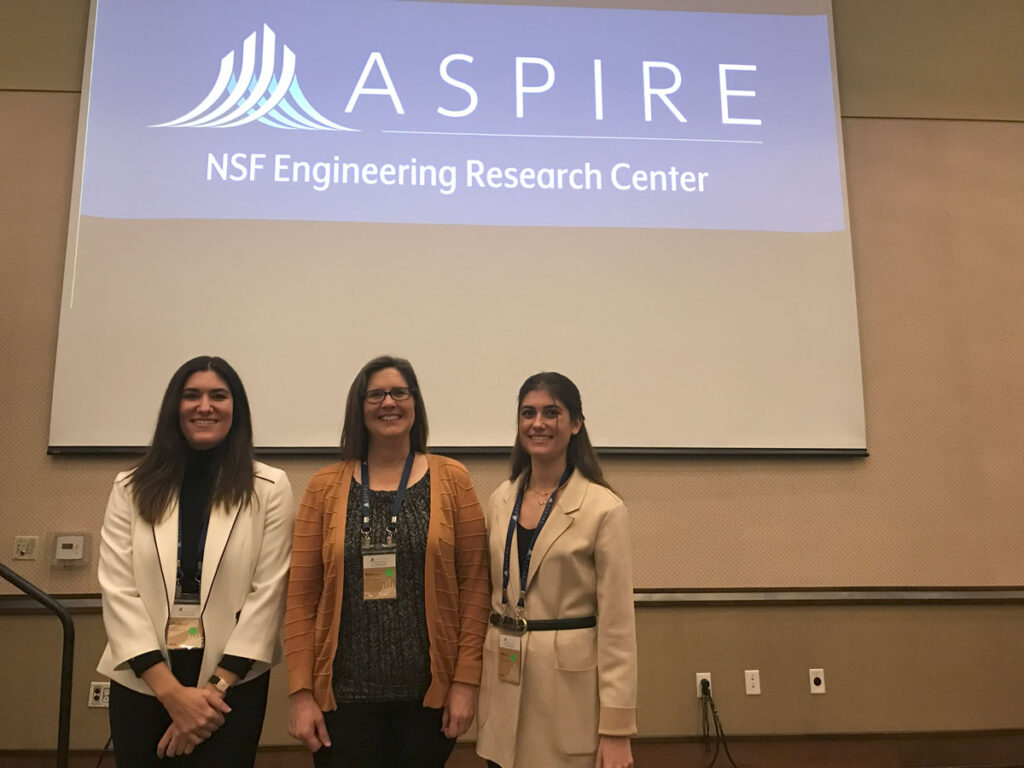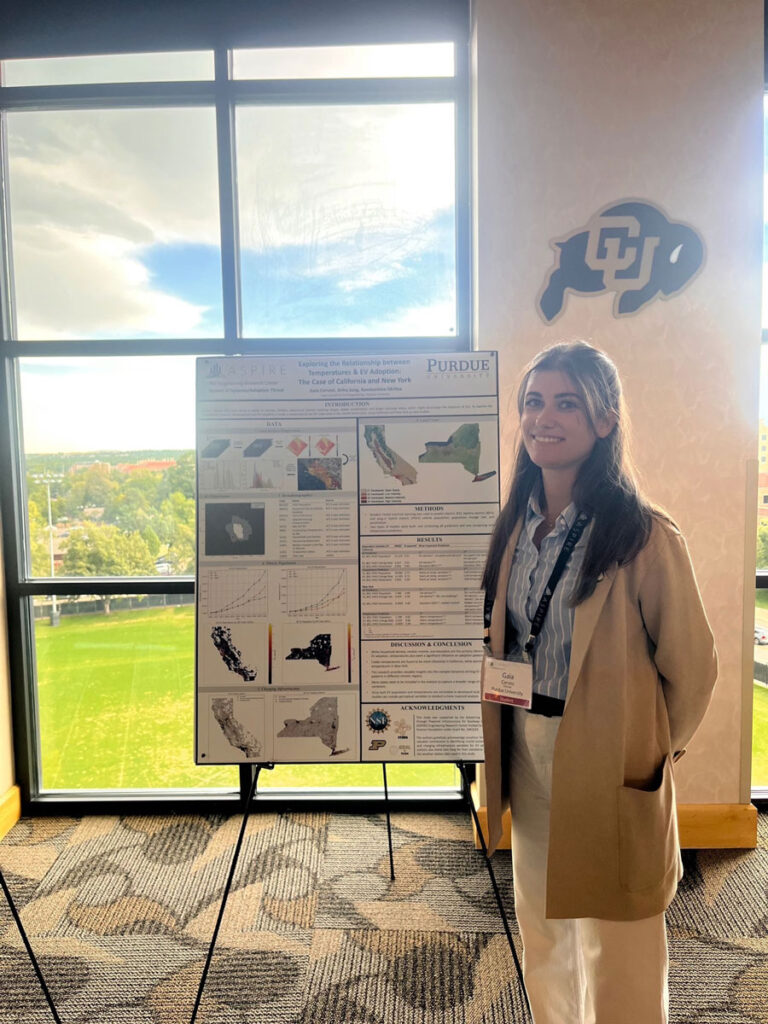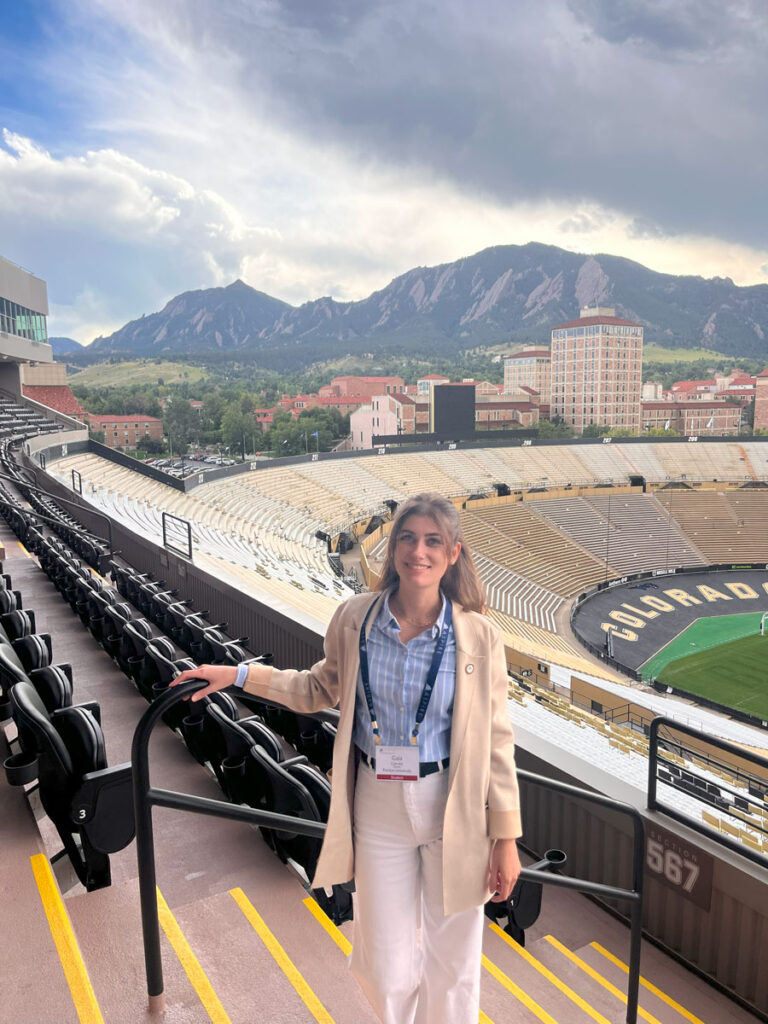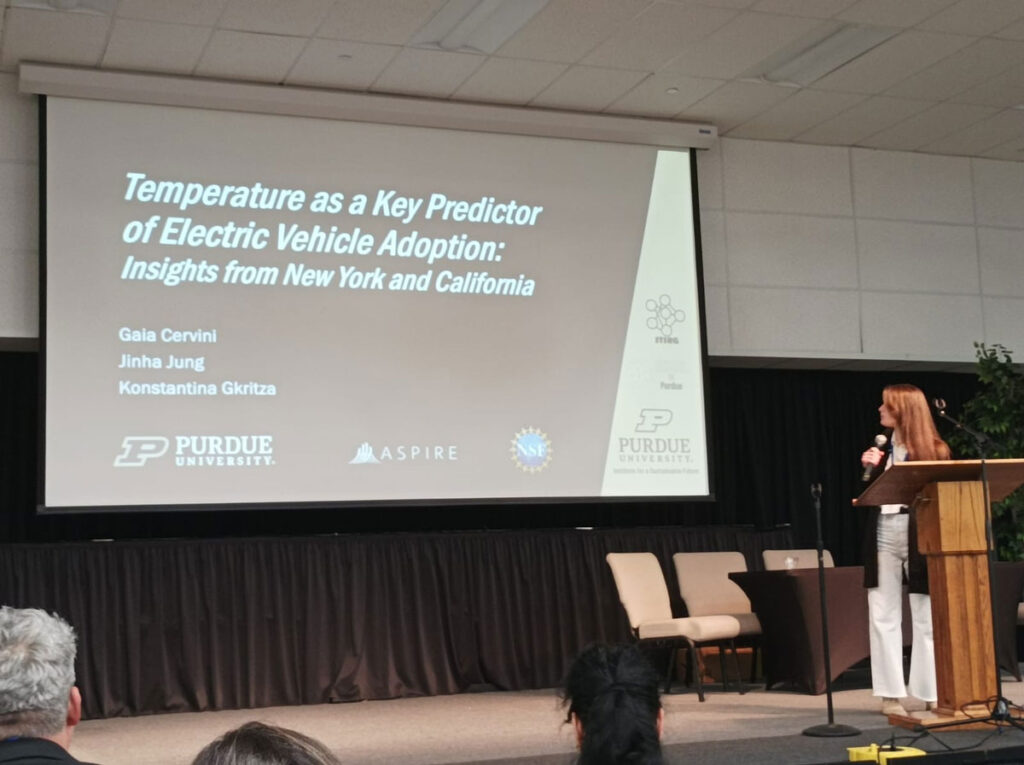Driving Curiosity: How One Student Linked Temperature to EV Adoption

Field work. Labs. Writing. Numerous rounds of reviews and revisions. These are only a handful of steps in the process of publishing research. This challenging, yet rewarding, process is one ASPIRE Ph.D. candidate Gaia Cervini is discovering the intricacies of.
“Learning the process of publishing is going to have an immense impact on anything I’ll do in the future,” Cervini said. “Publishing, as hard as it is, is valuable in both academia and industry because it builds skills essential for any competitive career.”
According to Cervini, the first step of research and publication is having a question. She identified the “key ingredient” to actually finishing this research and publication as “curiosity,” especially for times when the research and publication process becomes difficult and the answers are elusive.
“Publishing is both a scientific and creative process, and you really need to be curious about something to get started,” she said. “That curiosity will give you the motivation and endurance to get to the finish line, to get to the point where you actually answer that question.”


Cervini’s curiosity has led her to focus on how electric vehicle adoption can be influenced by local temperatures. In other words, she is exploring the link between consumer behavior and the environment and how this link can have repercussions on or shape the EV market. She has worked closely with ASPIRE Adoption Postdoctoral Researcher Lavan Burra and ASPIRE undergraduate Felix Stimets. Her faculty advisor, Konstantina (Nadia) Gkritza, considers Cervini’s interest in learning new things a valuable asset for this project.
“I have been impressed with Gaia’s intellectual curiosity, independence, and ability to absorb new concepts in a very short time frame,” said the ASPIRE Campus Director and professor of civil engineering and agricultural and biological engineering. “Collaborating with Gaia has brought fresh perspectives in my research group and the ASPIRE community, and together we’ve been able to tackle complex problems and produce innovative work.”
With the help of her faculty advisors, Cervini published their research entitled “Temperature and Electric Vehicle Adoption: A ZIP Code-Level Analysis in the U.S.” Her most recent research is currently in review at Nature npj sustainable mobility and transport, a process that is much longer than her previous publishing experiences.
“My research shows that there is indeed an interaction between the environment and consumer preferences,” Cervini explained. “Extreme temperatures can discourage electric vehicle adoption in the U.S., and this relationship should be taken more seriously as we innovate, especially if we want the market to remain resilient in the future.”
A Winding Path to Publishing
“With my first paper, I submitted it, and they got back to me very quickly. In about a month, I got reviews back, addressed the reviews, and then a month or two later, it was done and published,” she explained. “This time, it’s taking a bit longer because they’re still finding the right reviewers. The good news is that it’s under review and hasn’t been desk rejected, so it’s definitely moving forward.”
Despite the long length of time that publishing can take, it is very satisfactory experience once the research has been reviewed and published.
“Passing peer review is especially rewarding because it meant that the research I did held up to scientific scrutiny, and now it can be shared with the public, with other researchers, and even with policy makers,” Cervini said.
She also shared how the experience to meaningfully contribute to scientific research was “exciting but also intimidating.”
“There’s this exciting moment when years of work on a research question finally come together, and you realize you’ve uncovered something new, something the world didn’t know before,” she said. “At the same time, the thrill of publishing is matched by the awareness that your words shape how people think and make decisions, which makes you responsible for what you put out there.”
Despite the added responsibility, it is an experience that fosters a sense of belonging in the research community, while offering an opportunity to develop valuable skills.
“Preparing a manuscript for publication enhances critical thinking, communication, and academic confidence,” Gkritza said. “In addition to helping students develop essential research and writing skills, it shows them that their ideas have value and can contribute to larger conversations in their field.”

Cervini agreed, emphasizing the impact on her own confidence and communication skills as a Ph.D. candidate.
“Publishing boosted my confidence both as a researcher and as a person,” Cervini said. “It also sharpened my communication abilities — not only the written ones, but the oral ones as well. There comes a point when you have to present your work at conferences in a way people can understand and respond to challenging questions on the spot. It’s one of the most difficult, yet valuable, skills the publishing process teaches you.”
As students develop these talents and a sense of a belonging as a researcher, publishing becomes a form of preparation for their future after graduation.
“Ultimately, it can prepare students for future careers, as having research experience and publications is a strong asset to both academic institutions and industry,” Gkritza said. “Working and publishing research with students has been one of the most rewarding parts of my career.”
For students interested in learning more about research and publication opportunities at ASPIRE, reach out to Student Engagement Coordinator Melanie Conrad.
About ASPIRE:
ASPIRE, a National Science Foundation Engineering Research Center headquartered at Utah State University, leads groundbreaking research and development to accelerate electrification. With over 400 global collaborators, ASPIRE focuses on creating seamless, affordable electrified transportation systems, accessible for all vehicle classes, along with the public infrastructure needed to support them. By reducing emissions, improving air quality, and fostering economic growth through job creation and workforce training, ASPIRE’s work spans engineering, social science, policy, and business. Partnering with top universities, industry leaders, and community groups, ASPIRE is driving the future of advanced transportation. Learn more at aspire.usu.edu.
Contacts:
Melanie Conrad
Student Engagement Coordinator
ASPIRE ERC
Writer:
Kayleigh Kearsley
Marketing & Communications Intern
ASPIRE ERC